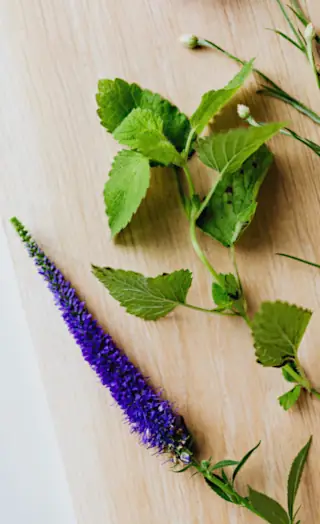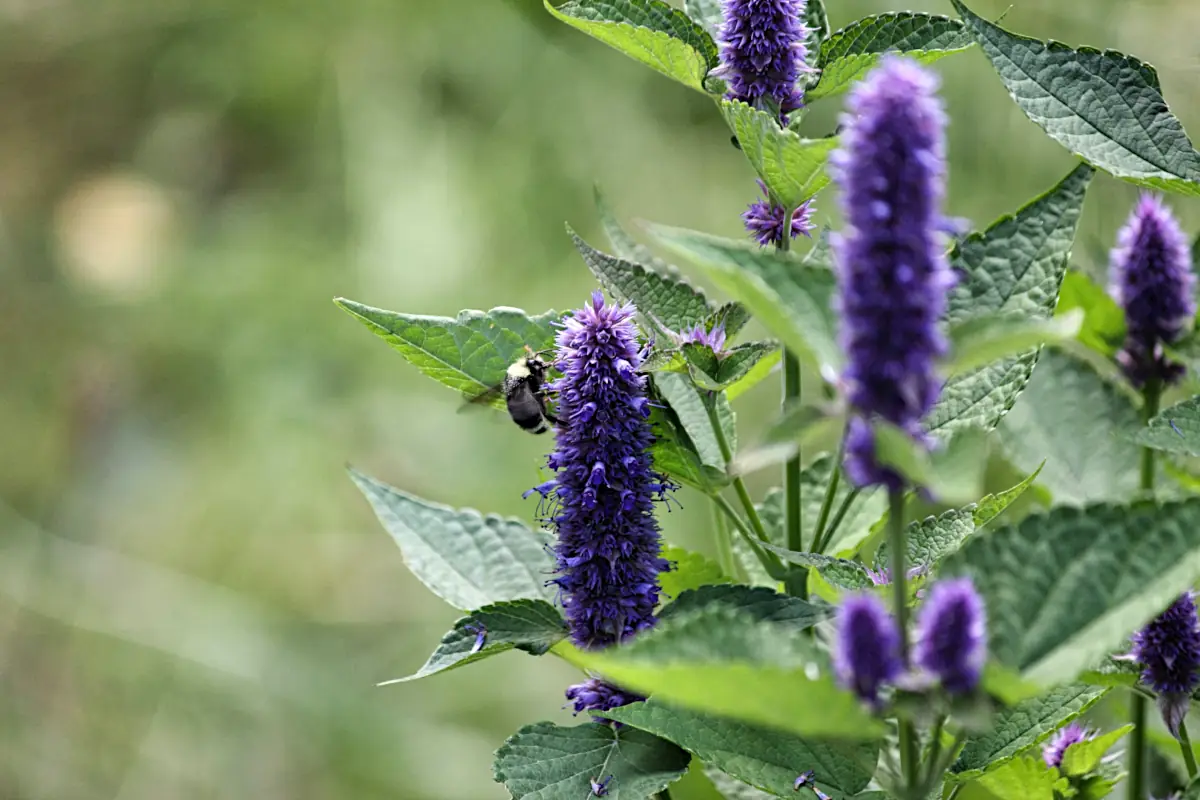Hyssop is a fragrant, versatile herb prized for its ornamental blooms, pollinator appeal, and traditional medicinal uses. Whether you’re growing hyssop for its vibrant spikes of flowers or brewing hyssop tea, this hardy plant deserves a place in your garden. Learn everything you need to know about growing and caring for hyssop, including popular varieties like anise hyssop and Agastache ‘Blue Fortune’.
Table of Contents
- What is Hyssop and How to Grow It
- Plant Profile
- Hyssop Care Tips
- Did You Know?
- Common Problems and Solutions
- FAQs about Hyssop
- Final Thoughts on Hyssop
What is Hyssop and How to Grow It
Hyssop (Hyssopus officinalis) is a semi-evergreen perennial herb native to southern Europe and the Middle East. It has been cultivated for centuries for its aromatic leaves and medicinal properties. Today, gardeners value hyssop both as an herb and as an ornamental plant.
Closely related species in the Agastache genus, such as anise hyssop (Agastache foeniculum), offer similar benefits with a sweeter, licorice-like scent. These plants are often grouped under the name “giant hyssop” or referred to by cultivar names like Agastache ‘Blue Fortune’, ‘Blue Boa’, and ‘Black Adder’. Hyssop and agastache are drought-tolerant, low-maintenance, and excellent for pollinator gardens.
Hyssop thrives in full sun and well-drained soil. It’s suitable for herb gardens, borders, and container planting. Sow hyssop seeds in early spring or plant nursery starts after the last frost. Once established, this perennial herb will reward you year after year with fragrant foliage and vibrant blooms.
Plant Profile
| Feature | Details |
|---|---|
| Scientific Name | Hyssopus officinalis, Agastache spp. |
| Common Name(s) | Hyssop, Anise Hyssop, Giant Hyssop |
| Plant Type | Herbaceous perennial |
| Best Climate / USDA Zones | Zones 4–9 (What are USDA zones?) |
| Preferred Light Conditions | Full sun |
| Watering Needs | Moderate; drought-tolerant once established |
| Soil Type | Well-drained, sandy or loamy |
| Pet Safe or Toxic | Non-toxic to pets |
| Common Issues | Root rot (from poor drainage), mildew |

Hyssop Care Tips
Caring for hyssop is straightforward, making it an excellent choice for beginner and seasoned gardeners alike:
- Sunlight: Provide at least 6 hours of direct sunlight daily.
- Soil: Use well-draining soil. Sandy or loamy textures are ideal.
- Watering: Water young plants regularly until established. Mature hyssop is drought-tolerant but prefers occasional deep watering.
- Pruning: Trim back spent flowers to encourage more blooms. Prune in early spring to maintain shape.
- Fertilization: Minimal fertilizer is needed. Use a balanced blend if growth seems slow.
- Winter Care: In colder zones, mulch around the base in fall for root protection.
If growing cultivars like Agastache ‘Blue Fortune’ or Agastache ‘Blue Boa’, expect slightly taller plants and more robust floral displays. These are often called blue giant hyssop or purple giant hyssop depending on their color.
Did You Know?
- Biblical Roots: Hyssop is mentioned multiple times in the Bible and was historically used in ceremonial cleansing rituals.
- Pollinator Magnet: Both hyssop and anise hyssop attract bees, butterflies, and hummingbirds with their nectar-rich flowers.
- Herbal Use: Hyssop leaves are used to make hyssop tea, known for its soothing qualities. Dried hyssop is also used in potpourri and herbal remedies.
Common Problems and Solutions
Root Rot: This is the most common issue, often due to poor drainage. Use a well-draining soil mix and avoid overwatering.
Powdery Mildew: Especially in humid climates. Provide good air circulation and avoid overhead watering.
Stunted Growth: May result from nutrient-poor soil or overcrowding. Thin out plants and amend the soil if needed.
FAQs about Hyssop
Is hyssop the same as anise hyssop?
Not exactly. While both are in the mint family and share similar growing conditions, anise hyssop (Agastache foeniculum) has a sweeter, licorice-like aroma, whereas true hyssop (Hyssopus officinalis) has a more pungent, medicinal scent.
Can you grow hyssop from seed?
Yes! Hyssop seeds and anise hyssop seeds are easy to grow. Start them indoors 6–8 weeks before the last frost or sow directly into the garden once temperatures warm up.
What is hyssop used for?
Historically, hyssop herb has been used for its medicinal properties, including respiratory and digestive support. Today, it’s commonly used for making herbal tea, aromatherapy, and adding ornamental value to gardens.
Final Thoughts on Hyssop
Hyssop is more than just a pretty herb—it’s a low-maintenance plant with deep historical roots and multiple uses in the garden and beyond. From classic hyssop officinalis to striking hybrids like Agastache ‘Blue Fortune’, this herb offers beauty, fragrance, and functionality. Whether you’re drawn to its biblical past, herbal benefits, or pollinator power, hyssop is a must-have for herb and flower enthusiasts alike.
If you love growing aromatic and pollinator-friendly perennials like hyssop, be sure to explore our Outdoor Plants & Perennials category. You’ll find more care guides and inspiration for creating a thriving, low-maintenance garden full of color, fragrance, and life.

